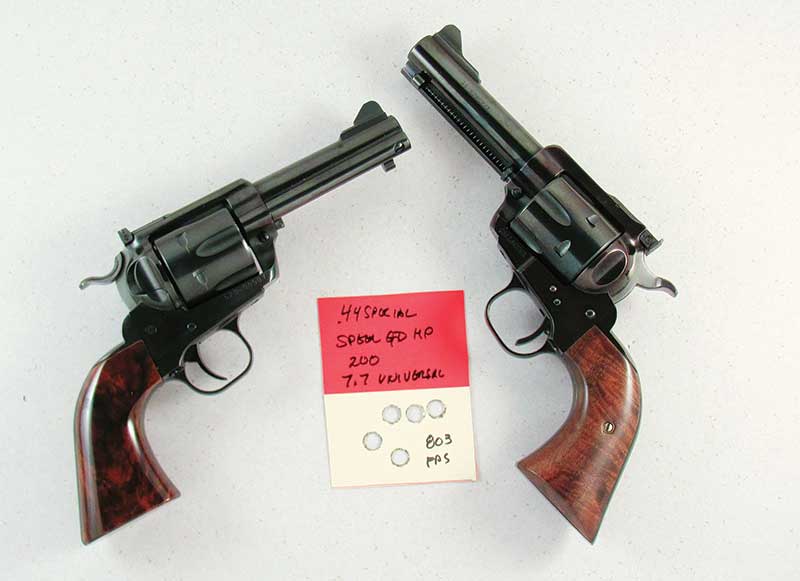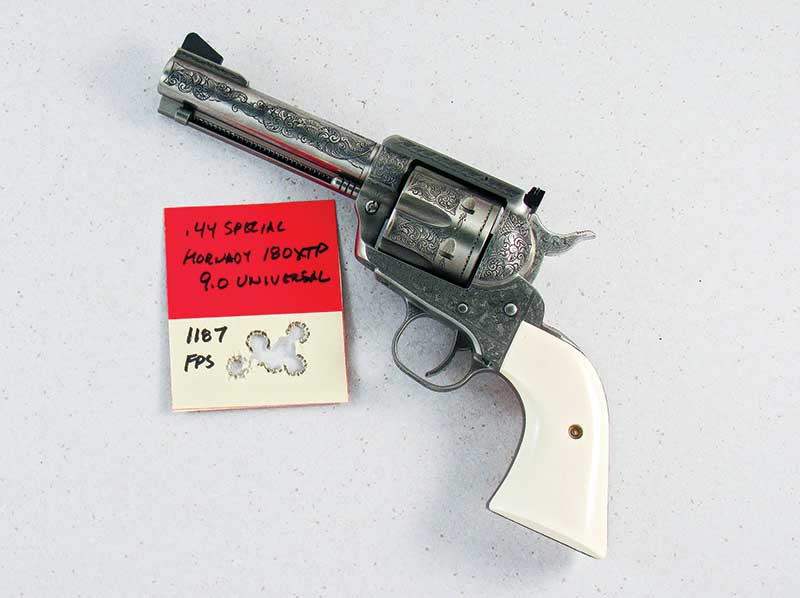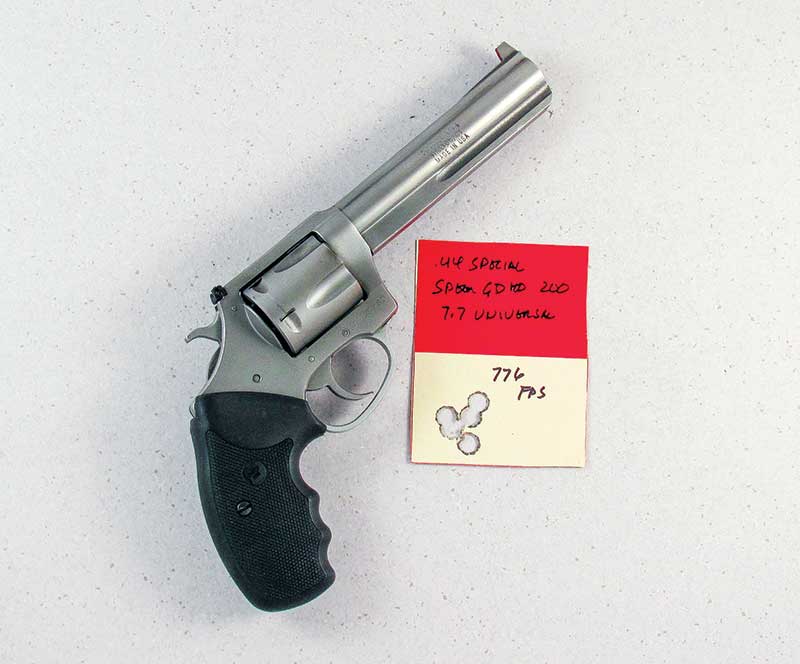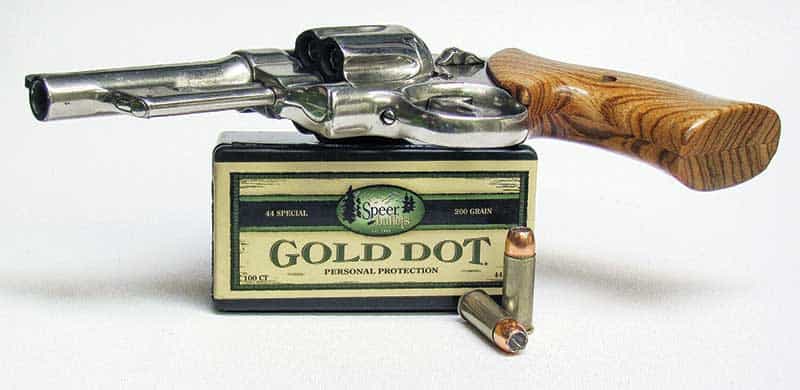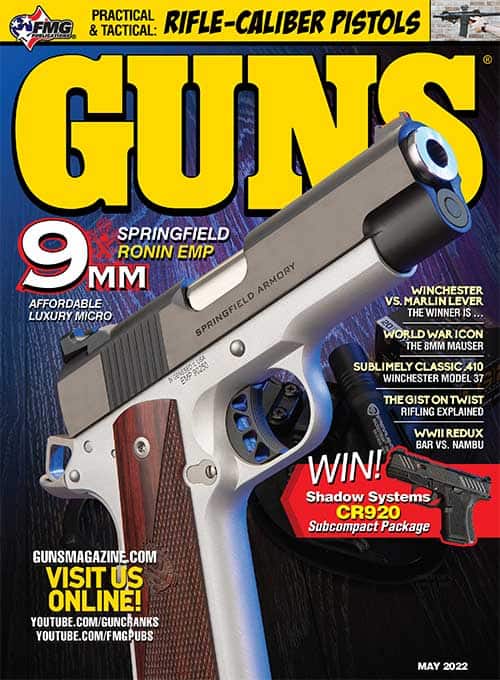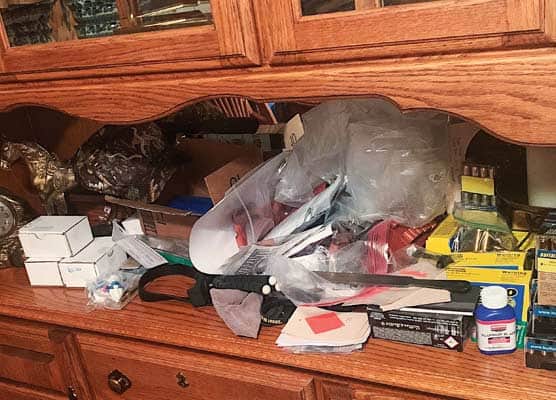Jacketed Bullets
in .44 Specials
Decisions, decisions …
Does anyone really know when modern jacketed bullets began to appear in sixgun cartridges? Yes, I know all about FMJ .45 ACP bullets that were used in both Smith & Wesson and Colt 1917s in WWI, as well as .38 Specials used by the military with full metal jacketed bullets. With the coming of the .38/44 Heavy Duty in 1930, special metal piercing jacketed bullets were available for this new Smith & Wesson large-frame .38 Special.
However, when the .357 Magnum appeared in 1935, the one major problem with this trendsetting sixgun was the fact it used cast bullets, which leaded up the barrel very quickly. The .357 Magnum was vastly improved by handloaders with the use of Ray Thompson’s Lyman #358156 gas check bullet, which eliminated leading. The .44 Magnum appeared 20 years after the .357 Magnum and still no jacketed bullets in the early ammo. At least the cast bullets were improved by having a gas check or coated with copper.
When I started shooting in the mid-1950s I never saw any jacketed bullets for reloading or even in factory sixgun ammunition. Lee Jurras started Super Vel in the 1960s and he used lightweight hollowpoint jacketed bullets at more than standard velocity for impressive results. Did standard jacketed bullets for sixguns arrive before Super Vel? I would appreciate any information readers could supply on this situation.
Today we have all kinds of jacketed bullets for every conceivable cartridge, even though there are shortages from time to time because of the heavy buying of bullets and ammunition by so many shooters. The problem is not finding bullets but deciding which ones to use. What about jacketed bullets in the .44 Special?
The .44 Special was the first big bore cartridge to appear in the 20th century. The first large-frame Smith & Wesson, which we now call an N-Frame, appeared in late 1907 as the New Century, Hand Ejector 1st Model, or as most people know it today, the Triple-Lock. The .44 Special cartridge itself was simply an elongated .44 Russian using the same 246-grain round-nose lead bullet at the same muzzle velocity. Much of the early ammunition was even loaded with black powder just as the .44 Russian was. The .44 Special cartridge is a perfect example of manufacturers not knowing exactly what they had. The original muzzle velocity was somewhere around 750 fps.
I have no idea who was the first to heavy-load the .44 Special, however, it may certainly have been Elmer Keith and he was the first to write about it. Because of his writings, a cult of sorts grew up around the .44 Special including a special group of enthusiasts known as the .44 Associates who shared ammunition reloading information and also published a manual with hundreds of .44 Special loads. All of Elmer Keith’s work, once he decided on the best bullet shape, was done with his #429421 bullet he designed for Lyman-Ideal and which dropped from the bullet mold at about 250 grains. This bullet is the classic semi-wadcutter design with three driving bands of equal diameter, one which made up the base, one which was below the crimping groove and the third one which formed the shoulder of the bullet. What has become known as the Keith load drove this bullet at about 1,200 fps in a 7-1/2″ barrel as my tests have confirmed. I doubt if Keith ever used a jacketed bullet in the .44 Special.
No Mas Magnum
Since we have the .44 Magnum, I see no reason to try to employ many 240-grain jacketed bullets in .44 Special sixguns. I do have a few loads I use sparingly from time to time but I mostly save these bullets for use in the .44 Magnum. My .44 Special loads are the 240 Hornady XTP over 18.5-grain of H110 for 1,114 fps from a 6-1/2″ Smith & Wesson, 17.0 grains of #4227 for 960 fps in a 5-1/2″ Colt Single Action and 18.5 grains of #4227 for 1,050 fps from a 7-1/2″ Colt Single Action. My long-favored cast bullet load of 7.5 grains of Unique used with this 240 jacketed bullet does a very respectable 960 fps from a 5-1/2″ Colt Single Action.
As I said, I use these loads very sparingly — mostly just for experimenting. However, my most used jacketed loads for the .44 Special are with the lighter-weight jacketed bullets, namely the Hornady 180 XTP-JHP, the Sierra 180 Sierra JHC and the Speer 200-grain Gold Dot Hollow Point. The latter is mostly saved for use in short-barreled concealment or self-defense style .44 Specials.
The Hornady 180 XTP-JHP is mostly loaded over 9.0 grains of Hodgdon’s Universal with excellent results. A custom Texas Longhorn Arms 7-1/2″ .44 Special built by Bill Grover on a Ruger OM Blackhawk clocks out at 1,271 fps with a five-shot group of 5/8″ at 20 yards; a Gary Reeder Custom Ruger NM Flat-Top with a 10″ barrel does 1,318 fps with a 7/8″ group; Clements Custom Ruger 5-1/2″ #5, 1,198 fps and 1/2″; and a factory Lipsey’s/Ruger stainless steel NMFT 4-5/8″ chronographs at 1,187 fps with a 3/4″ group. I like the latter one so well I had it fully engraved and ivory-stocked.
Switching to the Sierra 180 JHC my load is 16.5 grains of #2400 for 1,340 fps and a group of 5/8″ from the above-mentioned Texas Longhorn Arms Custom; 1,239 fps and five shots in 1/2″ from the Clements Custom Ruger; 1″ group at 1,386 fps from the Custom Reeder 10″ Flat-Top. Many years ago the late Bill Grover build up a handful of Skeeter Skelton Specials for six of us. Mine has a 4-5/8″ barrel, a Colt Single Action grip frame fitted with one-piece ivory stocks. It clocks out at 1,131 fps with a 3/4″ group.
The Speer 200 Gold Dot HP over 7.7 grains of Universal in a 5″ Charter Arms Bulldog Target clocks out at 776 fps with five shots in 3/4″ at 7 yards. All of these loads are much easier on the .44 Special sixguns than trying to drive a 240-grain bullet at 1,100 fps or more. The sixguns will last longer and so will I.
